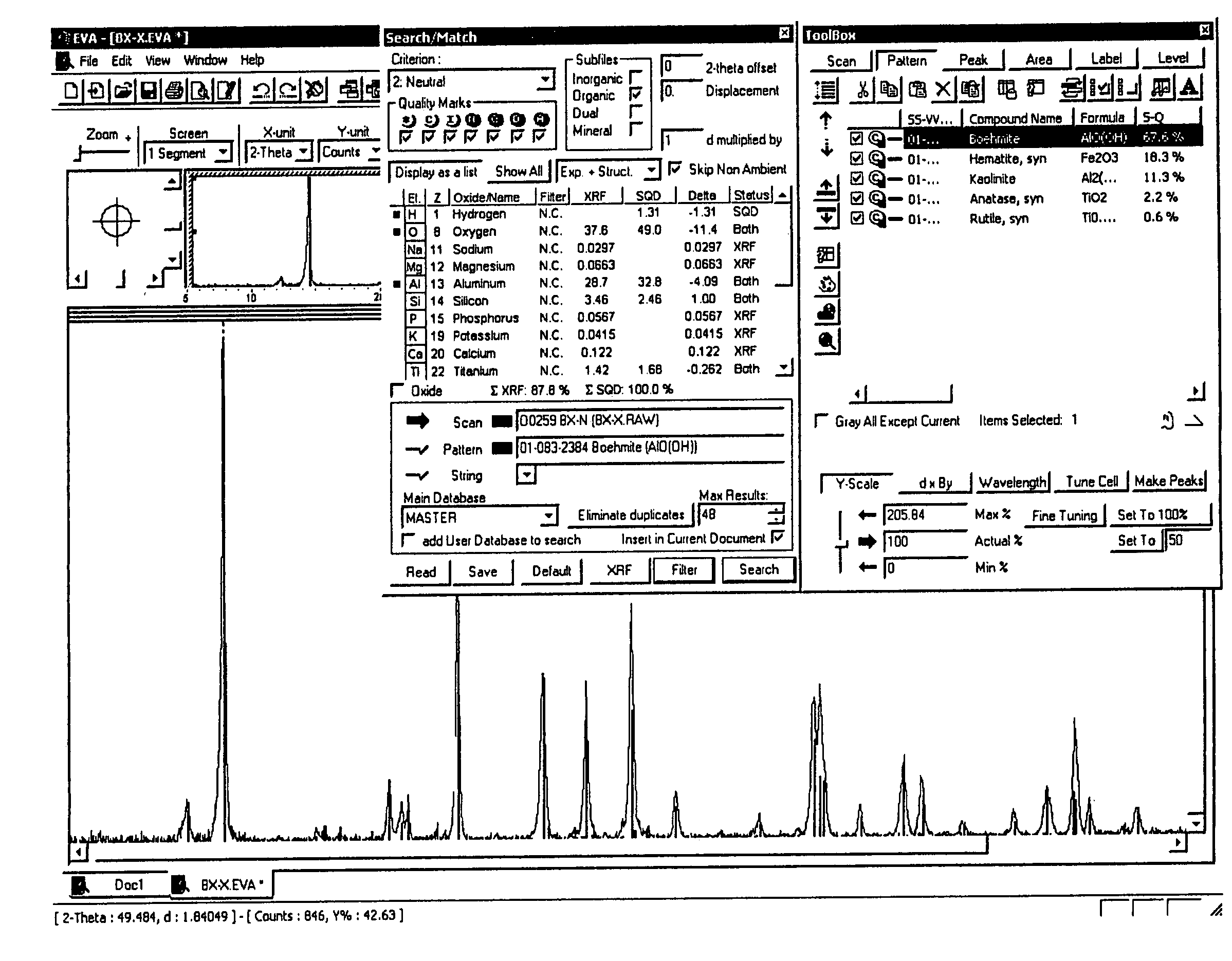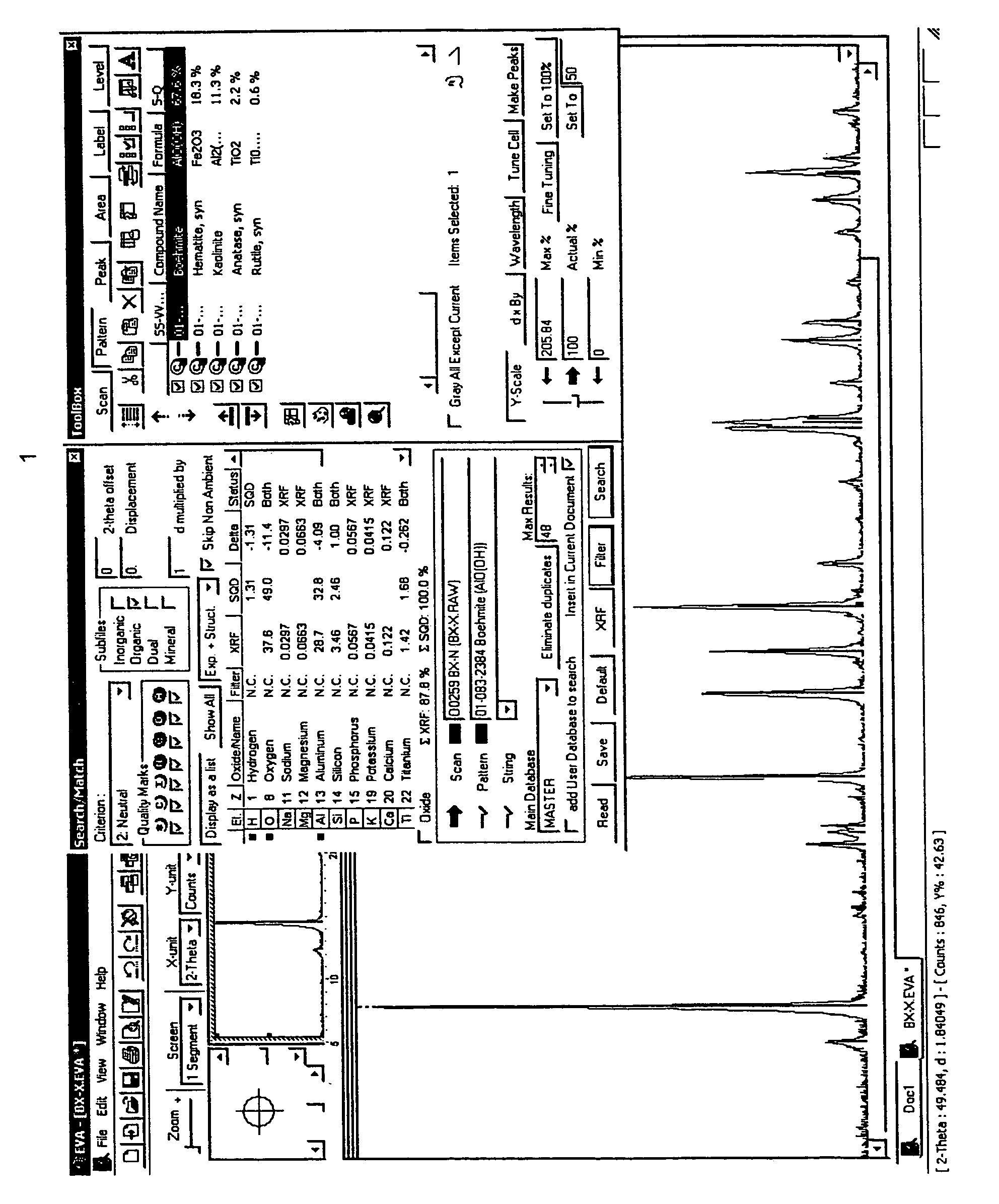Analytical method for determination of crystallographic phases of a sample
a crystallographic phase and analytical method technology, applied in the field of analytical methods for determining crystallographic phases of measuring samples, can solve the problems of difficult recognition of foreign atom portions in crystals (doping), complicated quantitative analysis using diffraction experiments, and incompatible diffraction patterns, so as to reduce the amount of measuring equipment, reduce the number of measurement paths, and avoid sample changes
- Summary
- Abstract
- Description
- Claims
- Application Information
AI Technical Summary
Benefits of technology
Problems solved by technology
Method used
Image
Examples
Embodiment Construction
[0054]The inventive method initially starts with acquisition of an element spectrum (e.g. XRF) and acquisition of a diffraction pattern (e.g. XRD) of a measuring sample. The results of these two measurements are used in the inventive method to carry out a quantitative determination of the concentration of the phases contained in the measuring sample, with high reliability and accuracy. At least the second part of the inventive method is performed with the assistance of software on a computer. This software may already have controlled acquisition of the element spectrum and the diffraction pattern or can be linked to the associated control software. Alternatively, the results of the acquisitions are imported into the software, e.g. as text files, via a disc.
[0055]The acquisitions are evaluated in accordance with the following steps:
[0056]1. Loading a diffraction pattern, e.g. an XRD measurement into the computer and loading of an element spectrum or element concentrations, which may ...
PUM
| Property | Measurement | Unit |
|---|---|---|
| crystallographic phases | aaaaa | aaaaa |
| concentration | aaaaa | aaaaa |
| phase analyzing | aaaaa | aaaaa |
Abstract
Description
Claims
Application Information
 Login to View More
Login to View More - R&D
- Intellectual Property
- Life Sciences
- Materials
- Tech Scout
- Unparalleled Data Quality
- Higher Quality Content
- 60% Fewer Hallucinations
Browse by: Latest US Patents, China's latest patents, Technical Efficacy Thesaurus, Application Domain, Technology Topic, Popular Technical Reports.
© 2025 PatSnap. All rights reserved.Legal|Privacy policy|Modern Slavery Act Transparency Statement|Sitemap|About US| Contact US: help@patsnap.com



